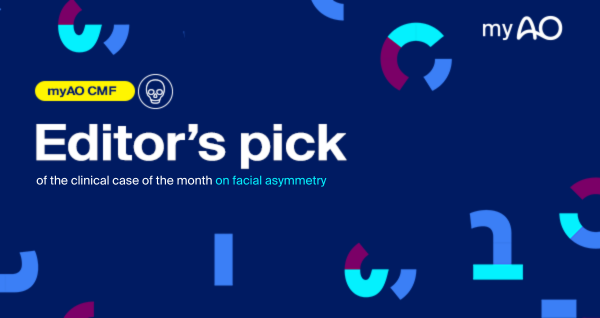Craniomaxillofacial Surgery
- Editor’s Pick of the clinical case of the month on facial asymmetry In this month’s Editor’s Pick, myAO is spotlighting a complex case presented by Dr. […]
- Editor’s Pick of the clinical case of the month on orthognathic surgery with cost-effective mentoplasty In this month’s Editor’s Pick, myAO is featuring a case published by Dr. […]
- Your profile is becoming a central part of the myAO experience, reflecting your achievements and contributions in the surgical world. Your myAO profile is now an outstanding means to […]
May 2022
Surgeons’ demand for knowledge and training on Head & Neck Cancer and Oral Oncology spans the specialties from head and neck surgery to maxillofacial, plastic, ear, nose, and throat, and general surgery. myAO is offering you the following exclusive selection of "knowledge gems" around Head & Neck Cancer and Oral Oncology.March 2023
Odontogenic keratocysts (OKC), previously known as keratocystic odontogenic tumors (KCOT or KOT), are rare benign cystic lesions involving the mandible or maxilla and are believed to arise from dental lamina. Treatment is often with marsupialization/enucleation/excision +/- aggressive curettage. However, they can have a very high recurrence rate (30-60%), and follow-up is essential.January 2022
The evolution of Orthognathic principles and practices, combined with knowledge of recent advances, helps the clinician more effectively treat challenging clinical problems. Coordinated comprehensive treatment planning primarily between the orthodontist and the orthognathic surgeon will help improve patient outcomes and decrease complications. Continuing education benefits clinicians by exposing them to new knowledge in the field, which in turn, leads to improved patient outcomes.March 2022
Recent developments in imaging technology have allowed for rapid processing and visualization of significant amounts of data yielded from a variety of digital imaging modalities. Prerequisites have been established for three-dimensional (3D) visualization as well as programs for the computer-assisted 3D planning of surgical procedures, and these image sources are now available to assist the surgeon in the operating room.- myAO clinical roundup on orthognathic surgery Orthognathic surgery plays a pivotal role in correcting dentofacial deformities, restoring function, and improving aesthetics and quality of life for patients. Advances in virtual surgical […]
- This month, myAO is featuring Eugênia Figueiredo, an active CMF contributor on myAO. Eugênia Figueiredo, a specialist at Hospital da Restauração in Recife, completed her Master’s in Oral and […]












